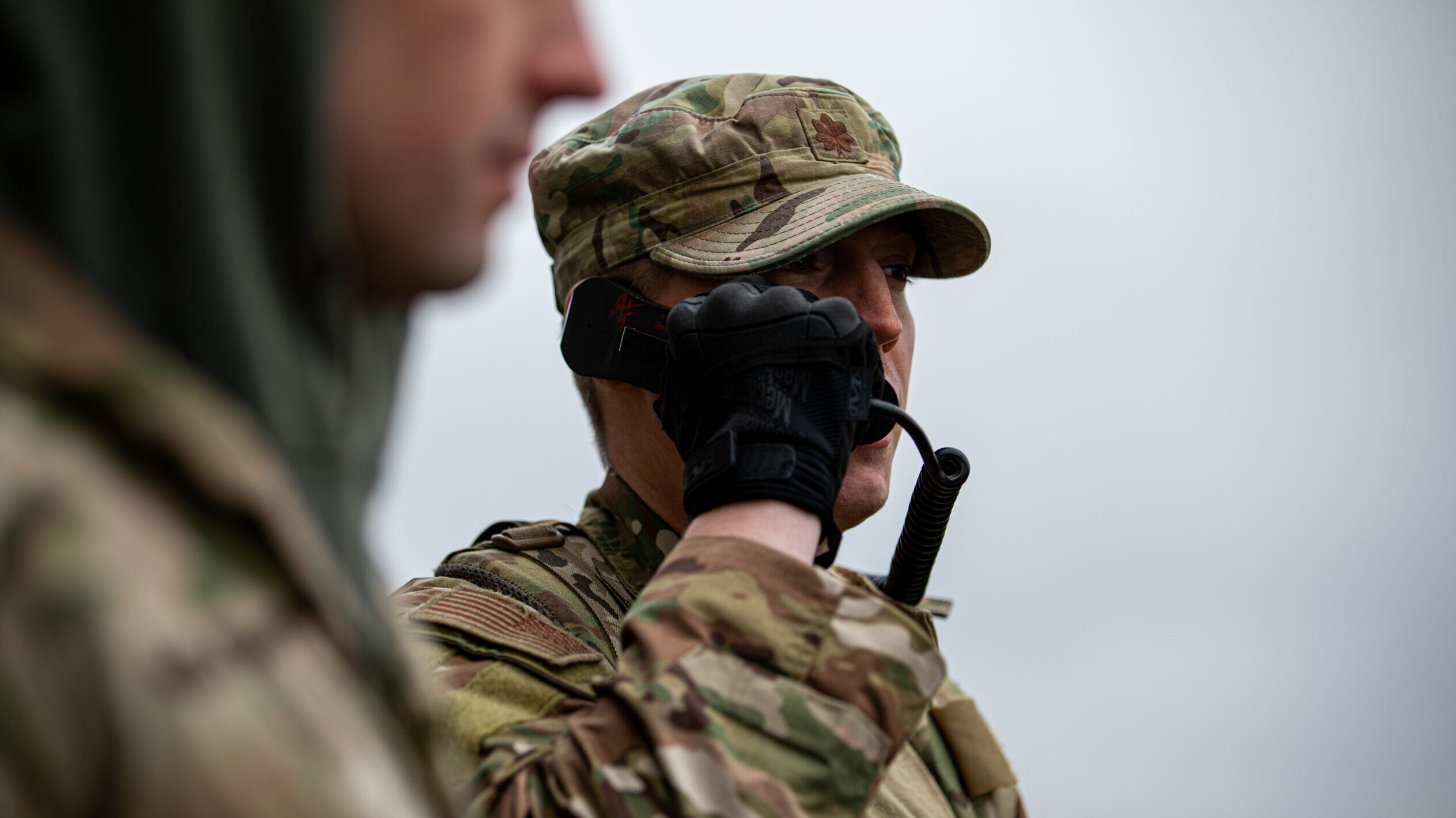SCHUYLER MOORE

A Tactical Air Control Party specialist ensures safety on the range while guiding air support with simulated data received from an Army ground commander during Exercise Scarlet Dragon on Fort Bragg, N.C., February 1, 2023. (US Army photo by Spc. Osvaldo Fuentes)
Pentagon leaders have been clear that they view the digital battlefield as the battlefield of the future. And yet, much of the exercising the military does is still focused on traditional capabilities. In this new op-ed, Schuyler Moore, the chief technology officer for US Central Command, argues it’s time for the military to more regularly integrate digital tools as it trains for the next conflict.
Last month, the “Dragon Joint Operations Center” (DJOC) at Fort Bragg was packed with more than 400 people and humming with energy. Military operators, policy makers, technical experts, and industry representatives all milled around a wall of screens displaying an array of maps, live feeds, and software tools. CENTCOM and XVIII Airborne Corps had gathered the group for a large-scale exercise called “Scarlet Dragon Oasis,” which included multiple organizations from across the Department of Defense, with dozens of assets dropping live munitions.
But the traditional assets and munitions were a sideshow to the real capability being showcased and stress-tested: the software tools and algorithms on the screens that are increasingly shaping the future of warfare.
From computer vision and synthetic aperture radar algorithms identifying rocket launchers for intelligence analysts, to digital workflow tools improving speed and precision of targeting teams, the exercise marked a critical step toward digital warfighting. Each tool contributed a critical piece to the concept of Joint All Domain Command and Control (JADC2), providing rapid situational awareness and response capability to commanders. Just as CENTCOM and XVIII Airborne Corp use events like this one to practice traditional warfighting, they are also using them to drive forward software capability at a speed previously unimaginable.
In 21st century conflict, digital warfighting is king. Automation software, statistical modeling tools, and AI algorithms provide an opportunity to orient ourselves faster, respond more precisely, and predict outcomes further out than our adversaries. Our adversaries know this, and have already begun their own heavy investments in these capabilities. And if software is a key to success in future conflict, the military’s exercises and preparations must adjust to reflect this reality.
Going forward, across the US military, exercises should increasingly reflect the pace and tempo of a rapid software lifecycle and should focus on solving digital friction points like data access, data preparation, software tool testing, and AI model refinement. Training operations should continue to focus on traditional warfighting skills and scenarios while incorporating digital tool training as much as possible.
CENTCOM has adopted this model in full force. At headquarters, CENTCOM is running recurring software- and data-centric exercises throughout the year (named the CENTCOM “Digital Falcon” exercise series), focused on increasing the speed and precision of its operations by leveraging digital tools like the ones described above. At the CENTCOM components, innovation cells are driving testing and adoption of digital tools that complement the headquarters series. In between events, CENTCOM is investing in data labeling and digital literacy training that will fuel effective software tools and promote their widespread adoption.
These are not just exercises; these are capability sprints. Each event iterates on previous ones, building on existing capability and introducing additional tools that will improve operational effectiveness. These events don’t just demonstrate whether CENTCOM can execute traditional military activities; they envision a new method of warfighting that runs on refined data and digital workflows that will provide critical advantage in future conflicts.
The US military transition to digital warfare will not happen without practice. Military operators need to train with software tools in the context of operations, give feedback to software developers, train with the tools again, and continue that loop to drive tool functionality and adoption across the military. Digital exercises like Scarlet Dragon Oasis and the Digital Falcon series provide the perfect mechanism for that training, and CENTCOM will continue to drive capability through this model while sharing lessons-learned with the broader Department of Defense.
When it comes to digital warfare, practice makes perfect, and we cannot begin practicing soon enough.
Back to the DJOC at Fort Bragg: as the exercise drew to a close, discussion focused not on the flight paths of aircraft, or the dispersal of troops on the ground, but on the data requirements for software tools, the cloud networks available to operators, and the data sharing agreements required for future events. Military operators excitedly shared their increases in speed and precision of targeting by leveraging digital tools that had only been introduced to them a few weeks prior.
One conclusion was clear to everyone present: it was not the munitions and ordnance that provided explosive capability, it was the software behind them.
No comments:
Post a Comment